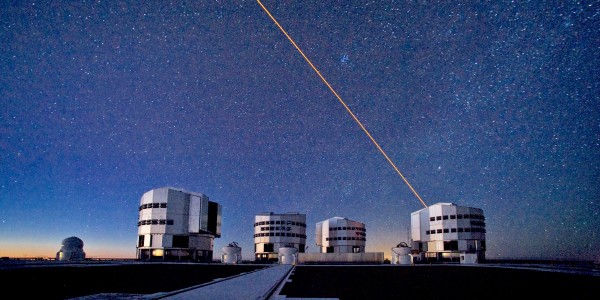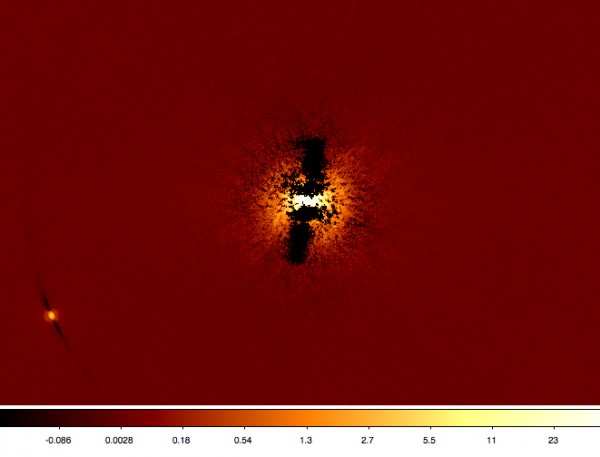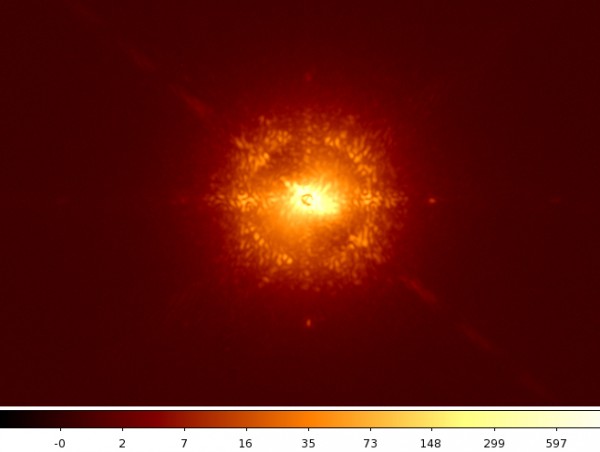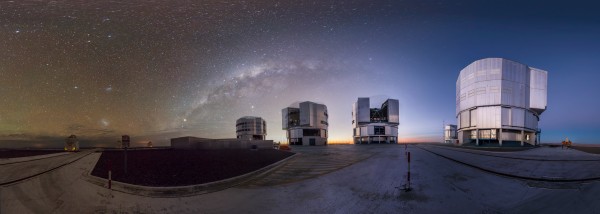SPHERE – the planets’ photographer

Only a few exoplanets have been photographed directly, the others were found in indirect methods. In order to detect and characterize exoplanets by imaging, a consortium in which members of PlanetS are involved, designed SPHERE (Spectro Polarimetric High contrast Exoplanet REsearch), an instrument capable of photographing a planet up to a million times fainter than its host star.

Reduced image on which we can see the “path” of the planet due to the fixed derotator during exposures. (photo: ESO)
To compare: If we installed SPHERE in Bern and observed a lighthouse in Rome, it would be able to distinguish the light from a candle that is only 50 cm away from the lighthouse. SPHERE consists of an adaptive optics system correcting the effects of atmospheric turbulence, different coronographic masks to block the light from the star and three light detection modules in the visible and infrared.
“We get double images from the instrument, taken at the same instant in the infrared at two different wavelengths but close,” says Sébastien Peretti, PhD student and member of PlanetS. “Observing in the infrared allows us to increase contrast, indeed the planet emits more in the IR than in the visible while it is the opposite for its host star,” says the University of Geneva student.
As planets do not just appear on the raw image, in order to detect the faint companions, we must first eliminate several optical effects due to the telescope, mainly some noisy patches that are called speckles (result of the aberration of the spider of the secondary mirror, the mirror or the optical path) as they are in general brighter than the planets. For that purpose we block the field derotator (keep it in a fixed position with respect to the field of view) which also keeps the speckle pattern stationary while a planet turns around the centre of the field. We let the target turn approximately sixty degrees using exposure times for each image ranging from several seconds to a minute. Thanks to a technique called ADI (Angular Differential Imaging) images are rotated anti-clockwise, with the effect that speckles are dispersed while focussing all the images on the planet. If a planet remains invisible we can then apply a second technique called SDI (spectral differential imaging), which uses the fact that speckles move dependent on the wavelength while the planet doesn’t.
This is a complex reduction technique that requires ad-hoc training provided by the Grenoble data center. For a whole week any future observer will work on data coming directly from Chile and will learn how to reduce images to get a better understanding of the data. This training not only helps the observer to obtain the maximum information contained in the images but also helps to take better decisions while commanding the instrument. (pb)
Categories: External Newsletter


